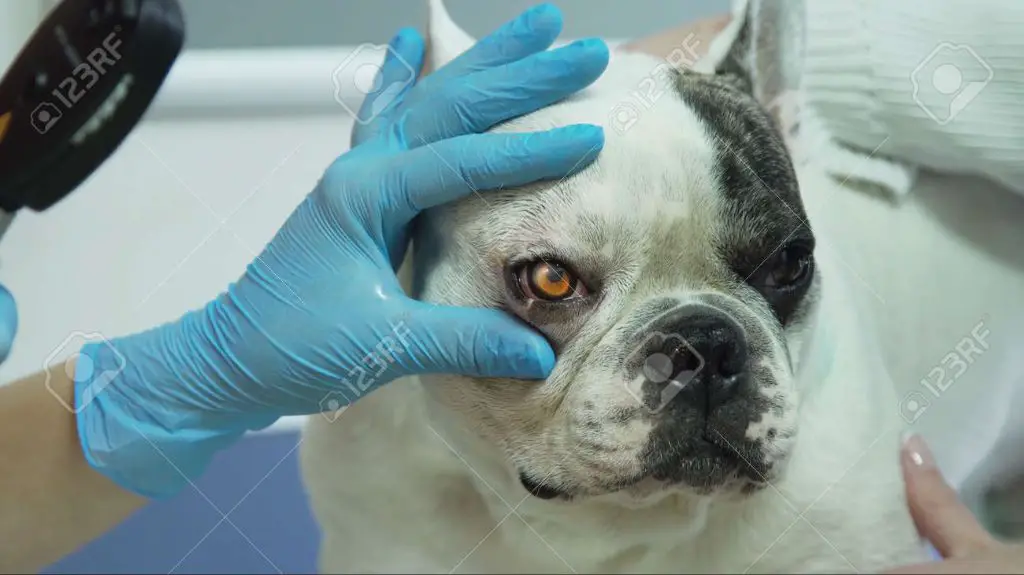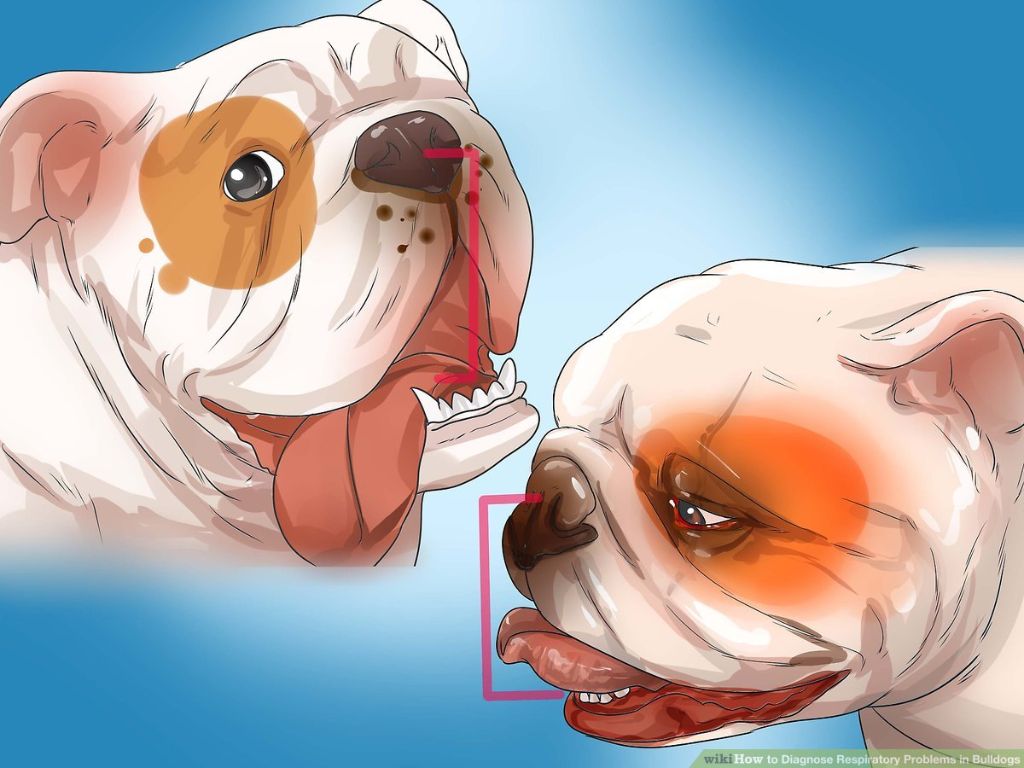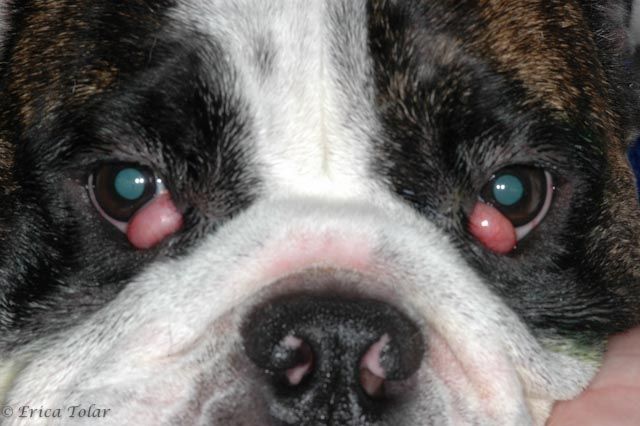Introduction
English bulldogs are prone to a variety of eye problems that can prevent them from fully opening their eyes. This is often due to the compressed shape of their face and head, known as brachycephaly. The bulldog’s facial folds and shortened muzzle put pressure on the eyes and surrounding structures, leading to irritation, infection and other issues. Bulldogs’ large, prominent eyes are also vulnerable to injury and disease. Common eye conditions like cherry eye, entropion and dry eye can all make it uncomfortable or difficult for a bulldog to open their eyes fully. While some bulldogs may open their eyes wide when alert, they often appear squinty-eyed or sleep with their eyes partially closed. Prompt veterinary attention and sometimes surgery is needed to resolve bulldogs’ eye troubles and improve their comfort and vision. With proper care, bulldog owners can help minimize their pets’ eye issues.
Anatomy of the Bulldog Eye
The bulldog’s eyes have some unique anatomical features that make them prone to certain health issues. Their eyes are large in proportion to their skull size and protrude more than most breeds. This gives them their characteristic “bug-eyed” appearance but also makes their eyes more vulnerable to injury and irritation.
Bulldogs also have shallow eye sockets, loose eyelids, and a tendency for the eyelashes to turn inward and irritate the eyes.
According to FrenchyFab.com, “Understanding the French Bulldog’s eye anatomy is crucial in recognizing and addressing these issues. French Bulldogs have a unique eye shape that includes shallow eye sockets, loose eyelids, and eyelashes that can turn inward and irritate the eye.”(Source)
The combination of protruding eyes with loose surrounding tissue puts bulldogs at risk for a number of eye conditions that can cause irritation, infection, and even blindness if left untreated.
Common Eye Conditions
Bulldogs are prone to several eye conditions that can cause vision problems or discomfort if left untreated. Some of the most common eye conditions in bulldogs include:
Entropion

Entropion is when the eyelid rolls inward, causing the eyelashes to rub against the surface of the eye. This constant irritation can lead to pain, corneal ulcers, and scarring on the eye (Source).
Cherry Eye
Cherry eye occurs when the gland of the third eyelid prolapses and protrudes as a red swollen mass in the inner corner of the eye. This can lead to dry eye and secondary infections if not treated (Source).
Cataracts
Cataracts cause clouding in the lens of the eye leading to blurred vision. This is often an age-related condition but can develop earlier in bulldogs.
Progressive Retinal Atrophy
This genetic condition causes gradual vision loss due to retinal degeneration. It eventually leads to complete blindness.
Causes
There are several reasons why English bulldogs may have trouble opening their eyes, with many of them related to the breed’s genetics and facial structure.
One of the most common causes is entropion, a condition where the eyelid folds inward and causes the eyelashes to rub against the eye. This is an inherited condition in bulldogs and can lead to irritation, inflammation, and discharge. Surgical correction is often needed to treat entropion and stop the eyelashes from constantly irritating the eye.
Cherry eye is another inherited condition where the gland of the third eyelid prolapses and bulges out as a red mass in the corner of the eye. This can be very irritating and cause excessive tearing and discharge. Cherry eye may require surgery to tack the gland back into place.
Facial folds are very common in bulldogs and these folds can actually cover the eyes or rub against them, causing irritation. Trimming and cleaning facial folds regularly is important to prevent infections between the folds.
The bulldog’s brachycephalic skull shape also plays a role, as their shallow eye sockets and prominent eyes make the eyes more prone to irritation and proptosis (eye popping).
In the end, many bulldog eye conditions that prevent opening are due to hereditary factors and the breed’s unique facial structure. Responsible breeding to reduce exaggerated features can help, along with proper eye care and cleaning of facial folds.
Symptoms
Some common symptoms of eye issues in English Bulldogs include:
Squinting – Bulldogs may squint or blink excessively due to irritation, abnormal eyelashes rubbing the eye, or excessive tear production. Squinting is a sign of eye discomfort or pain.

Discharge – Watery, mucus-like, or purulent discharge coming from one or both eyes may indicate an infection or other eye condition. Persistent green or yellow discharge is not normal.
Redness – Bloodshot eyes, redness around the eyes or inner eyelids can signal inflammation, infection, or injury.
Swelling – Swollen eyelids, tissue around the eyes, or bulging of the eyes may result from infection, inflammation, or a condition like cherry eye. This swelling is abnormal and requires veterinary attention.
Other symptoms like pawing at the eyes, keeping the eyes closed, eye ulcers, and crusty discharge often accompany these main signs. Bulldog owners should monitor their pet’s eyes closely and contact their vet promptly if they notice any of these symptoms. Early intervention can help prevent vision loss.
Sources:
https://vet4bulldog.com/eye-problems-in-bulldogs-1/
https://www.ufaw.org.uk/dogs/english-bulldog-brachycephalic-ocular-syndrome
Diagnosis

Diagnosing eye issues in Bulldogs often starts with a complete examination by a veterinarian. The vet will look for signs of abnormalities or damage in the eyes such as corneal ulcers, eyelid issues like entropion, and glaucoma.
Some common diagnostic tests the vet may perform include:
- Fluorescein stain test to check for ulcers on the cornea
- Tonometry to measure pressure inside the eye and screen for glaucoma
- Schirmer tear test to measure tear production and check for dry eye
- Complete blood count and blood chemistry to check for infections or other systemic issues
- Ophthalmic exams to evaluate the interior of the eye
Imaging tests like X-rays or MRI scans may also be recommended to get a closer look at the eye and surrounding structures. Early diagnosis of any eye problems is crucial in Bulldogs to prevent worsening of conditions that could lead to blindness.
According to one source, “Diagnosing and treating eye conditions as soon as possible is imperative to help alleviate discomfort and preserve your dog’s vision.” (Source)
Treatment
There are several treatment options for eye conditions in bulldogs including surgery, medication, and lifestyle changes.
Surgery may be performed for conditions like cherry eye and entropion to correct the anatomical defects causing irritation and discomfort. According to the Melbourne Bulldog Clinic, surgery is the recommended treatment for recurrent cherry eye cases https://melbournebulldogclinic.com.au/bulldog-health/eye-problems/.
Medications like steroidal and antibiotic eye drops can treat infections, inflammation, and dry eye. Vet4Bulldog recommends using eye drops containing tacrolimus for dry eye https://vet4bulldog.com/eye-problems-in-bulldogs-1/.
Lifestyle changes like keeping facial folds clean and dry, avoiding eye irritants, and using humidifiers can help prevent recurring eye issues.
Prevention
Preventing eye issues in bulldogs often starts with being selective about breeding to reduce brachycephaly. Breeding bulldogs with less exaggerated facial features and skulls can help reduce the severity of brachycephalic ocular syndrome. According to one source, “Breeding away from exaggerated conformation would make a significant improvement to the health and welfare of bulldogs.”[1]

When acquiring a bulldog, it’s also important to examine the parents’ eyes and facial structure. Choosing a puppy from parents with fewer eye issues and less extreme brachycephaly can potentially reduce the chances of eye problems. Additionally, bulldog owners should have their vet thoroughly examine the eyes at an early age to detect any issues as soon as possible.
At home, owners can take steps like wiping eyes daily with a damp cloth to prevent irritation and infections. Keeping the face folds clean and dry is also essential. Bulldogs should avoid activities that could injure the eyes. Lastly, providing good nutrition with antioxidants can support eye health.
Outlook
Without treatment, the outlook for an English bulldog’s eye condition can be poor. Many eye issues like cherry eye or entropion are chronic and recurrent, often requiring multiple surgeries over a dog’s lifetime according to the University of Bristol. Surgery comes with risks of complications, discomfort and distress. Persistent eye conditions can cause corneal damage, ulceration, vision impairment and even blindness if left untreated.
However, with prompt veterinary care and appropriate treatment like surgery, medication or lifestyle changes, the prognosis for most English bulldog eye problems is good. Surgery can successfully tack many issues like entropion, although it may need to be repeated. Medication and eye drops can effectively manage allergies, dry eye and infections. While bulldogs are prone to eye problems, treating them quickly under veterinary guidance can help preserve vision and comfort.
Conclusion
In conclusion, bulldog eye issues can potentially lead to vision impairment or blindness if left untreated. Some of the most common conditions like cherry eye, entropion, and dry eye require prompt veterinary attention and in some cases, corrective surgery. While bulldogs are prone to eye problems due to their facial anatomy, owners can help prevent issues by staying vigilant about symptoms, avoiding irritants, keeping facial folds clean, and bringing their dog in for regular vet exams. Catching eye conditions early and following veterinary recommendations is key to minimizing long-term damage. Bulldog owners who are proactive about eye health can help their dogs continue to live happy, comfortable lives.